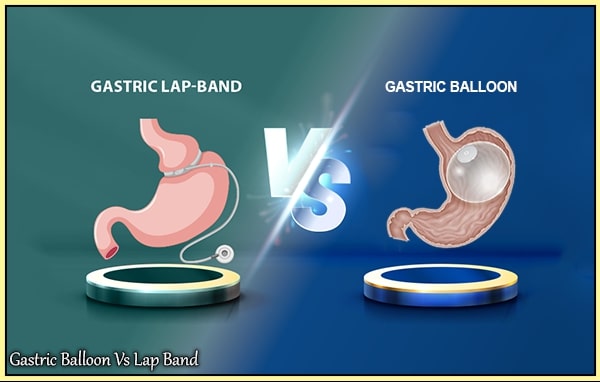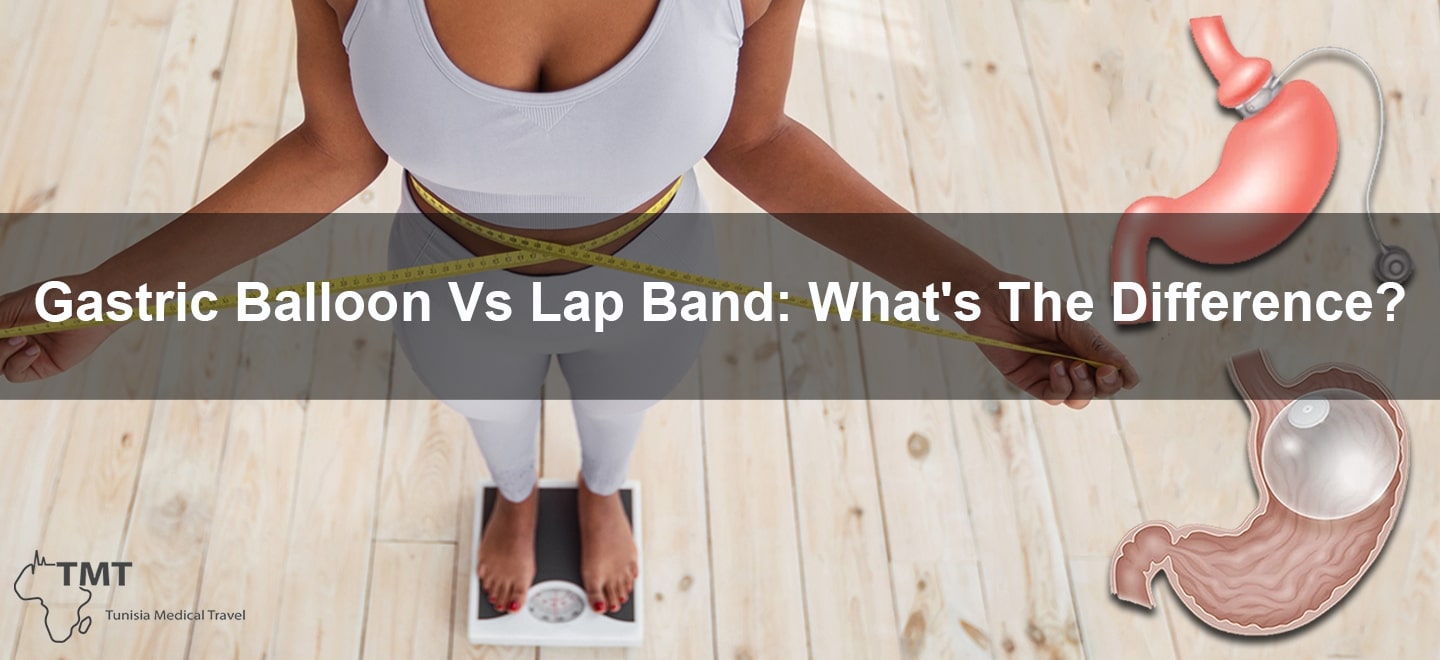Gastric Balloon Vs Lap Band: What’s The Difference?
Gastric Balloon Vs Lap Band: What’s The Difference?
In the realm of weight loss procedures, individuals often find themselves at a crossroads, torn between options like the lap band and the gastric balloon. Understanding the nuances of these interventions is crucial for making an informed decision regarding one’s weight loss journey.
How Do Gastric Balloon and Lap Band Procedures Differ in Managing Weight Loss?
The divergence between the lap band and gastric balloon in managing weight loss lies in their fundamental approaches. The lap band opts for a surgical route, utilizing a band to physically restrict stomach capacity, fostering gradual weight loss. Conversely, the gastric balloon takes a non-surgical approach, employing an inflatable device to induce a sense of fullness, curbing food intake without invasive alterations.
Gastric Balloon is Less Invasive than Lap Band
Delving into the level of invasiveness, the lap band stands as a surgical procedure requiring incisions and the placement of a restrictive band. In contrast, the gastric balloon showcases its non-surgical nature, involving the placement of an uninflated balloon through the mouth, subsequently inflated to limit food intake with minimal invasion.
Complications from the Gastric Balloon and Lap Band
Exploring the potential complications associated with the gastric balloon and lap band procedures is crucial for individuals considering these weight loss interventions. Awareness of the risks allows for informed decision-making and a more comprehensive understanding of the overall impact on one’s health. Starting with the gastric balloon, while it is considered less invasive, individuals may encounter certain temporary complications. Notable among these is the possibility of experiencing discomfort, nausea, or vomiting during the initial adjustment period. These side effects are generally transient, diminishing as the body adapts to the presence of the balloon. On the other hand, the lap band introduces a set of complications associated with its surgical nature. Infections are a potential risk, emphasizing the importance of strict adherence to post-operative care guidelines to minimize this concern. Additionally, there is a risk of band slippage, where the band may move from its intended position, necessitating corrective measures. It’s essential to note that complications from both procedures are relatively rare, and advancements in medical technology have contributed to minimizing associated risks. However, as with any medical intervention, a thorough understanding of potential complications allows individuals to make informed choices and actively participate in their post-operative care. In the context of the gastric balloon, individuals may find reassurance in the temporary nature of potential complications. The discomfort and nausea often subside as the body adjusts to the balloon’s presence. This contrasts with the potential long-term considerations associated with the lap band. Understanding the differences in complications also involves recognizing that the lap band may entail a more extended recovery period due to its surgical nature. Patients may need to navigate restrictions on physical activities during this recovery phase, contributing to the overall post-operative experience.
When contemplating the gastric balloon or lap band, acknowledging potential complications is an integral part of the decision-making process. Consulting with healthcare professionals ensures that individuals are well-informed about the risks associated with each procedure, empowering them to make choices aligned with their health goals and preferences.

Weight Loss Success from Gastric Balloon and Lap Band
Exploring the potential for weight loss success is a critical aspect when comparing the gastric balloon and lap band procedures. Both interventions aim to assist individuals in shedding excess pounds, but understanding their unique mechanisms and outcomes is essential for those embarking on a weight loss journey. Research indicates that both the lap band and gastric balloon have demonstrated significant weight loss in individuals who undergo these procedures. However, the pathways to success differ between the two interventions. The lap band achieves weight loss by creating a physical restriction in the stomach, limiting the amount of food it can hold. This restrictive mechanism prompts a sense of fullness, leading to reduced calorie intake and gradual weight loss over time. The effectiveness of the lap band is contingent on factors such as adherence to dietary guidelines and lifestyle modifications. Conversely, the gastric balloon employs a different strategy. It induces weight loss by occupying space within the stomach, creating a feeling of fullness and reducing the desire to consume large quantities of food. This approach often leads to more rapid initial weight loss, but the success of the gastric balloon is also influenced by a patient’s ability to adapt to dietary changes and maintain healthy habits. Individual responses to these procedures can vary, and success hinges on factors beyond the interventions themselves. Adherence to post-operative guidelines, lifestyle modifications, and ongoing medical supervision play pivotal roles in determining the ultimate success of either the lap band or gastric balloon. It’s important to note that while both procedures can contribute to substantial weight loss, the lap band is often considered a more long-term solution. The ability to adjust the band over time allows for ongoing control and optimization of weight loss outcomes.
When considering weight loss success with the gastric balloon and lap band, individuals must recognize the nuances of each procedure. The choice between them involves an understanding of personal preferences, commitment to lifestyle changes, and consultation with healthcare professionals to navigate the path towards achieving sustainable and lasting weight loss goals.
Gastric Balloon Vs. Lap Band: Choosing the Right Weight Loss Option
The decision-making process involves factors beyond the procedures’ mechanics. Personal preferences, medical history, and lifestyle play pivotal roles in choosing between the gastric balloon and lap band. The less invasive nature of the gastric balloon may appeal to some, while others may prefer the long-term control offered by the lap band.
Effectiveness and Long-Term Outcomes: Gastric Balloon Versus Lap Band
When contemplating weight loss interventions, an in-depth analysis of the effectiveness and long-term outcomes distinguishes the gastric balloon from the lap band. This scrutiny is pivotal for individuals seeking sustainable solutions to their weight management challenges. The lap band stands out for its long-term effectiveness, offering a surgical approach that allows for ongoing adjustments to the restrictive band. This adaptability enables individuals to tailor their weight loss journey to changing needs, maintaining a sense of control over time. Research suggests that the lap band can result in significant and sustained weight loss when coupled with adherence to post-operative guidelines and lifestyle modifications. Conversely, the gastric balloon emphasizes a different approach to effectiveness. While it may lead to rapid initial weight loss, it is often considered a temporary solution. The balloon is typically removed after a few months, and sustaining long-term results relies heavily on the individual’s commitment to adopting and maintaining healthy eating habits and lifestyle changes post-removal. Long-term outcomes also involve considerations of the durability of results and the potential for weight regain. The lap band, with its ability to be adjusted over time, provides a more continuous and controllable weight management experience. On the other hand, the gastric balloon may be associated with a faster initial weight loss, but maintaining these results requires ongoing diligence and lifestyle modifications. It’s crucial to acknowledge that individual responses to these interventions vary. The success of the lap band is often contingent on regular follow-ups for adjustments and adherence to recommended dietary and lifestyle changes. In contrast, the gastric balloon demands a commitment to sustained healthy habits to prevent weight regain once the balloon is removed. Financial considerations come into play when assessing long-term outcomes. While the lap band may have higher upfront costs due to its surgical nature, the potential for ongoing adjustments may offer a more predictable financial outlook over time. The gastric balloon, being a temporary solution, may present lower initial costs but could lead to additional expenses if further interventions are required.
The decision between the gastric balloon and lap band requires a careful evaluation of one’s goals, preferences, and willingness to commit to long-term changes. Consulting with healthcare professionals ensures personalized guidance, helping individuals make informed choices that align with their unique circumstances and aspirations for effective and lasting weight loss.

